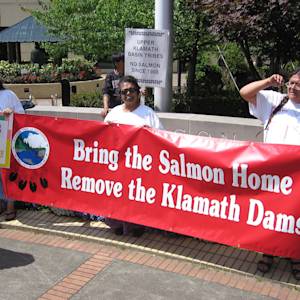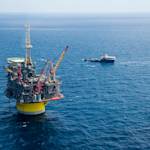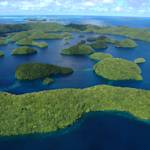Sugar kelp aquaculture in New York
2018 CE • New York
"Sugar kelp has become the seaweed of choice for New York aquaculture, though it is still in an experimental phase. In addition to being a native plant and a tasty vegetable, it cleans the oceans, capturing carbon and nitrogen from the water and helping to prevent ocean acidification and harmful algae blooms . . . New York coastal waters are not an ideal fit for traditional kelp-growing practices. Mr. Michael Doall first got interested in kelp as a way to diversify his oyster farming . . . Doall had an idea. 'No one had really tried to grow in shallow water,' he said. 'I like a challenge.' In 2018, working with a grant from the New York Farm Viability Institute, Mr. Doall devised a simple staked line method to grow kelp in a few feet of water without the expensive anchors traditionally required for seaweed . . . [The practice] ended up producing between four and nine pounds of kelp for every foot of line they planted four years in a row — more than any other farm in New York, Mr. Doall claims, a real seaweed haul. 'Mike Doall invented shallow-water kelp farming,' said Bren Smith, a founder of GreenWave, a Connecticut-based organization that first trained Mr. Doall to farm kelp . . . In the four years since Mr. Doall started growing kelp, he has devised techniques for every sort of New York aquatic environment: from the fast-flowing, murky East River to the shallow, sandy bottom of Moriches Bay to the deep, pristine waters of the Peconic Estuary. He has offered advice and planted on more than 15 commercial sites — all considered experimental, as state regulators are still working out health and safety regulations for farming seaweed. If New York seaweed aquaculture takes off, it will be in large part thanks to Mr. Doall’s ability to show other farmers how to grow where no one has grown before."
Charity Robey, "The Johnny Appleseed of Sugar Kelp," The New York Times, June 10, 2022.
Image: David Csepp, NOAA/NMFS/AKFSC/Auke Bay Lab, Public domain, via Wikimedia Commons


Learn about Maya Lin’s fifth and final memorial: a multi-platform science based artwork that presents an ecological history of our world - past, present, and future.

Discover ecological histories and stories of former abundance, loss, and recovery on the map of memory.

Learn how we can reduce our emissions and protect and restore species and habitats – around the world.

See how art can help us rethink the problems we face, and give us hope that each one of us can make a difference.

Help make a global memorial something personal and close to home. Share your stories of the natural world.


